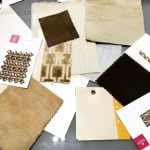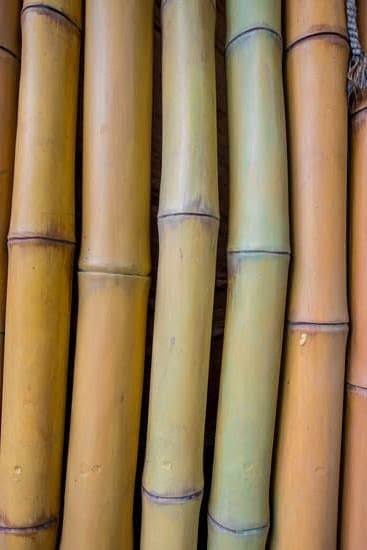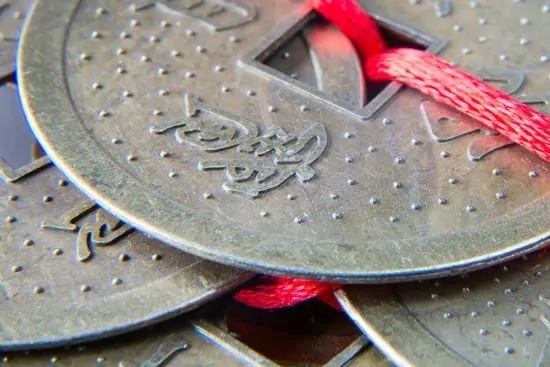Feng Shui, an ancient Chinese practice, focuses on creating balance and harmony in one’s living space to promote positive energy flow. The orientation of a house plays a crucial role in Feng Shui, with the east-facing houses believed to harness favorable energy for abundance and well-being. In this article, we will explore the benefits, design recommendations, tips for enhancing positive energy, balancing techniques, garden practices, and real-life examples of successful east-facing houses in Feng Shui.
In Feng Shui, the principles are based on the flow of energy or “chi” within a space. The house’s orientation is key to optimizing this flow and promoting a sense of balance and harmony for its occupants. East-facing houses hold particular significance in Feng Shui as they are believed to be conducive to attracting positive chi that can enhance various aspects of life.
According to Feng Shui philosophy, an east-facing house allows for a steady influx of natural light which symbolizes vitality and growth. This orientation is associated with positive energy flow leading to benefits in health and well-being, career opportunities, and overall abundance. Throughout this article, we will delve into the ways an east-facing house can be optimized using design and layout recommendations as well as practical tips for creating a harmonious environment.
Benefits of East Facing Houses in Feng Shui
East facing houses hold special significance in Feng Shui, as their orientation allows for the harnessing of positive energy and abundance. According to Feng Shui principles, the direction in which a house faces can greatly impact the flow of energy within the space. When it comes to east facing houses, they are believed to receive beneficial energy from the sunrise, promoting a sense of renewal and vitality throughout the home.
The positioning of an east facing house is thought to invite positive energy flow into various aspects of life. In terms of health and well-being, this orientation is said to promote physical vitality and mental clarity, creating a harmonious atmosphere that supports overall wellness. Furthermore, career opportunities are believed to flourish in an east facing house, as the orientation is thought to inspire growth and advancement in professional life.
In addition to these benefits, east facing houses in Feng Shui are also associated with an abundance of natural light, which contributes to a bright and uplifting living environment. This aspect not only enhances the overall aesthetics of the space but also fosters a sense of positivity and open-mindedness. By embracing the principles of feng shui within an east-facing house, individuals can create a nourishing and supportive living environment that promotes holistic well-being.
Design and Layout Recommendations for East Facing Houses
When it comes to designing and laying out an East facing house in the principles of feng shui, there are a few key considerations to keep in mind to ensure the optimal flow of positive energy throughout the home. Here are some recommendations for creating a harmonious and balanced living space:
- Placement of furniture for optimal energy flow: Arrange furniture in a way that allows for easy movement and flow throughout the space. Avoid blocking doorways or pathways with large pieces of furniture, and position seating areas to take advantage of natural light and outside views.
- Use of natural light and color schemes: Maximize the use of natural light by keeping windows unobstructed and utilizing light, airy window treatments. In terms of color schemes, consider using warm, inviting colors that promote a sense of energy and vitality, such as yellows or light greens.
- Incorporating elements of nature: Integrate natural elements such as plants, flowers, or water features into your home decor. Bringing the outdoors inside can help create a sense of balance and tranquility within an East facing house.
By taking these design and layout recommendations into consideration, you can ensure that your East facing house is optimized to receive positive energy as per feng shui principles. Creating a layout that promotes positive energy flow can have a significant impact on the overall harmony and well-being within your living space.
Tips for Enhancing Positive Energy in an East Facing House
Clearing Clutter and Organizing Spaces
One of the foundational principles of Feng Shui is the belief that a clean and organized space allows for the flow of positive energy. In an east facing house, it is important to declutter your living spaces and ensure that there is no stagnant energy blocking the flow. This can be achieved by regularly tidying up, getting rid of items that are no longer needed, and organizing your belongings in a way that promotes a sense of spaciousness and tidiness.
Incorporating Feng Shui Cures and Remedies
In addition to decluttering, incorporating specific Feng Shui cures and remedies can further enhance the positive energy in an east facing house. This may include using symbols, crystals, or artwork that are believed to bring good luck and harmony. For example, placing a mirror in a strategic position can help amplify the natural light in your home while also symbolically expanding the space.
Creating a Peaceful and Harmonious Environment
Creating a peaceful and harmonious environment is essential for maximizing positive energy in an east facing house. This can be achieved through the use of calming color schemes, soothing sounds, and comfortable furniture arrangements.
It is also important to address any sources of negative energy, such as noisy appliances or areas with poor lighting. By cultivating a serene atmosphere, you can invite positive energy into your home while promoting a sense of well-being for yourself and all those who enter.
By implementing these tips for enhancing positive energy in an east facing house, homeowners can create an environment that aligns with the principles of Feng Shui while promoting balance and prosperity.
Balancing Energy in East Facing Houses
When it comes to Feng Shui, the orientation of your house plays a crucial role in harnessing positive energy. East facing houses are particularly favored in Feng Shui due to their association with new beginnings, growth, and abundance. However, it is important to ensure that the energy flow within an east facing house is balanced to optimize the benefits it can bring.
One common challenge in east facing houses is the potential for imbalances in energy flow. To address this, incorporating elements such as mirrors and water features can help maintain equilibrium. Mirrors are believed to reflect and expand energy, spreading positivity throughout the home. Water features, such as fountains or indoor ponds, promote the flow of Chi (vital life force) and help maintain a harmonious environment within an east facing house.
In addition to utilizing mirrors and water features, another effective method for balancing energy in an east facing house is to use Feng Shui compass readings for adjustments. The Bagua compass is often used to identify specific areas of a home that may require additional enhancements for optimal energy flow. By aligning furniture and decor according to the guidance provided by a Feng Shui compass reading, occupants can create a more balanced and harmonious living space.
| Element | Description |
|---|---|
| Mirrors | Reflect and expand energy throughout the home |
| Water Features | Promote Chi flow and maintain harmonious environment |
| Feng Shui Compass Readings | Align furniture and decor for optimal energy flow based on compass guidance |
Incorporating Feng Shui Practices in the Garden of an East Facing House
When it comes to incorporating Feng Shui practices in the garden of an east facing house, the first step is to embrace nature. The garden should be a place of peace and tranquility, and this can be achieved by arranging plants and landscaping to enhance positive energy flow.
In Feng Shui, certain plants are believed to bring good luck and prosperity, such as bamboo, money trees, and flowering plants. By strategically planting these in your garden, you can create a harmonious outdoor space that complements the energy of your east facing house.
In addition to the plant selection, it’s essential to create outdoor relaxation and meditation spaces in your garden. This can be achieved through the use of comfortable seating areas, such as benches or hammocks, where you can unwind and connect with nature.
Adding elements such as water features or wind chimes can also contribute to a peaceful atmosphere in the outdoor environment. By integrating these elements into your garden design, you can cultivate a space that promotes overall well-being and positive energy.
Harmonizing Indoor and Outdoor Energy Flow
Finally, it’s important to consider the connection between indoor and outdoor energy flow in an east facing house. By aligning the design elements of your garden with those indoors, you can ensure a seamless transition of positive energy throughout your living space.
This may involve using similar color schemes or incorporating natural materials in both your interior decor and outdoor landscaping. By harmonizing these elements, you can create a balanced environment that supports the principles of Feng Shui for overall harmony and abundance within your home.
Case Studies of Successful Feng Shui East Facing Houses
When it comes to applying Feng Shui principles, the orientation of the house plays a crucial role in harnessing positive energy and creating a harmonious living environment. The east facing house has long been regarded as favorable in Feng Shui due to its association with health, growth, and new beginnings. Here are some real-life examples of homes that have successfully applied Feng Shui principles to their east facing houses.
- A family in California utilized the principles of Feng Shui in designing their east facing home. By strategically placing furniture such as the dining table and sofa to optimize energy flow, they were able to create a sense of balance and tranquility within their living space. Additionally, they incorporated elements of nature such as indoor plants and natural color schemes to further enhance the positive energy within their home.
- In New York City, a young professional transformed her east facing apartment into a space that not only supported her career but also promoted overall well-being. By decluttering and organizing her home, she was able to create an open and inviting space that allowed for optimal energy flow. She also made use of Feng Shui cures such as crystals and essential oils to promote abundance and success in her career.
- Another example is a couple in London who integrated Feng Shui practices not only inside but also outside their east facing house. They carefully designed their garden with specific plants and landscaping techniques that encouraged positive energy flow. Additionally, they created outdoor relaxation spaces where they could meditate and connect with nature, thus harmonizing the energy between their indoor and outdoor living spaces.
These case studies serve as inspiring examples of how implementing Feng Shui principles in an east facing house can lead to a more balanced, harmonious, and prosperous living environment. Whether it’s through strategic furniture placement, decluttering and organizing, incorporating natural elements, or creating outdoor sanctuaries, these homeowners have successfully harnessed the positive energy associated with east facing houses according to feng shui principles.
Conclusion
In conclusion, the principles of Feng Shui offer a unique perspective on creating harmony and balance within the home, particularly in the case of east facing houses. The orientation of a house holds great significance in Feng Shui, as it determines the flow of energy and influences various aspects of one’s life. Throughout this article, we have explored the benefits, design recommendations, and practical tips for enhancing positive energy in an east facing house.
By incorporating the recommended design and layout strategies for east facing houses, such as optimal furniture placement, natural light utilization, and incorporation of elements from nature, homeowners can create a space that promotes positive energy flow and abundance. Moreover, implementing Feng Shui cures and remedies while clearing clutter and organizing spaces can further enhance the peaceful and harmonious environment within an east facing house.
It is important to note that achieving balance in an east facing house may require addressing potential challenges and imbalances that arise from its orientation. Utilizing mirrors, water features, and even Feng Shui compass readings can help in balancing the energy within the space. Additionally, extending these practices to the garden allows for a seamless flow of positive energy between outdoor and indoor spaces.
Embracing the principles of Feng Shui in an east facing house can truly transform one’s living environment into a place that nurtures health, well-being, career opportunities, and overall abundance. By harnessing positive energy through intentional design choices and mindful practices within both the indoor and outdoor spaces of an east facing house, homeowners can cultivate a space that supports their physical, emotional, and spiritual needs.
Frequently Asked Questions
Is East Facing House Good Feng Shui?
An East facing house in feng shui is generally considered good because it receives the morning sun, which symbolizes new beginnings, vitality, and growth. This direction is associated with positive energy flow and brightness.
What Is the Best Direction for a House to Face Feng Shui?
The best direction for a house to face in feng shui depends on the individual’s Kua number and birth date, which help determine their personal lucky directions. However, in general, a house facing either East (for new beginnings) or South (for fame and reputation) are considered auspicious.
What Color Is Lucky for East Facing House?
The color that is considered lucky for an East facing house in feng shui is green. Green represents growth, vitality, and renewal – all of which align with the positive energy associated with an East facing house. Additionally, blue can also be a good choice as it represents tranquility and peace.

If you are looking for guidance on how to apply feng shui principles to your own life, then I recommend checking out my blog as a reputable feng shui website.





